NSYSU students and teachers organize a shadow play in Taiwanese
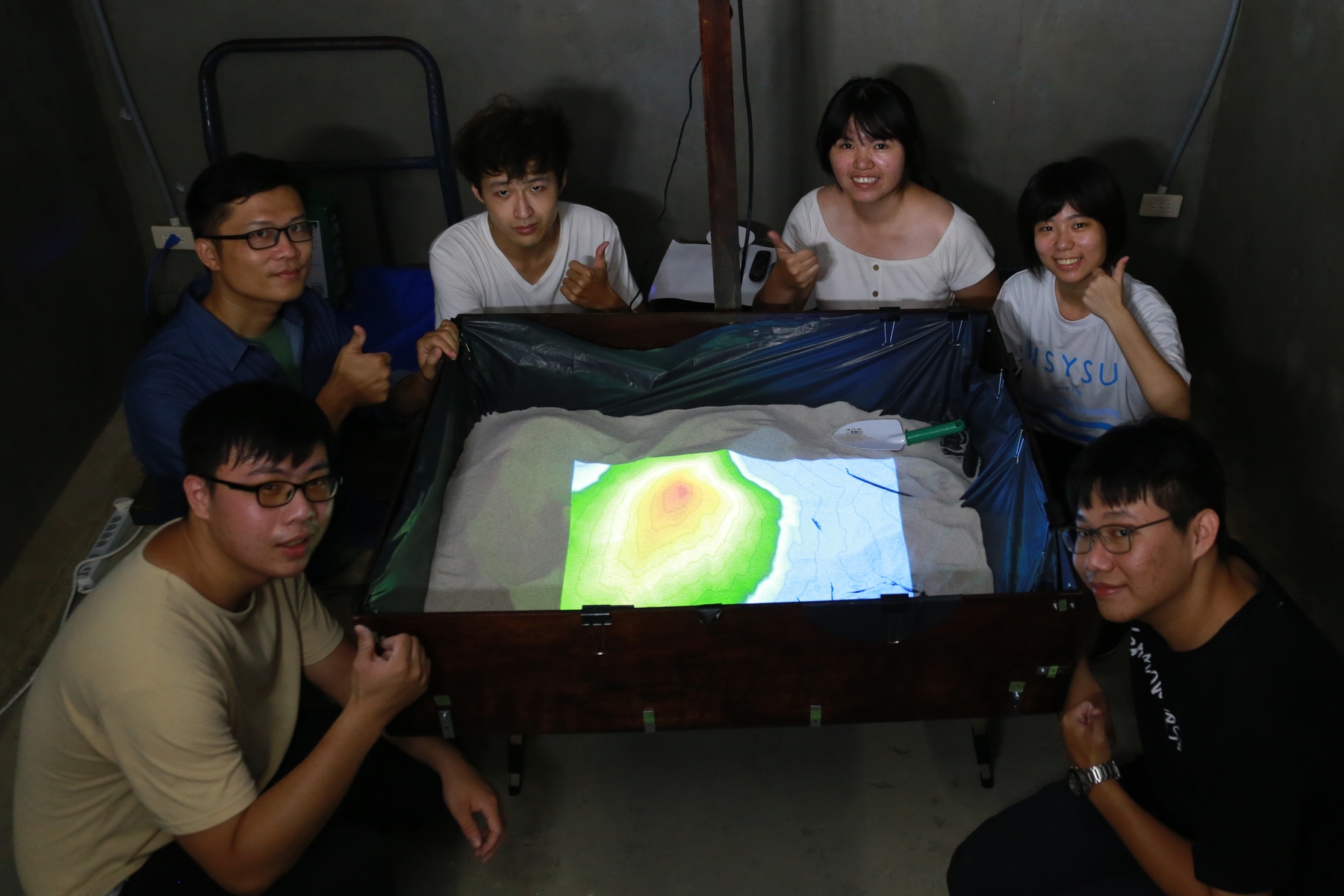
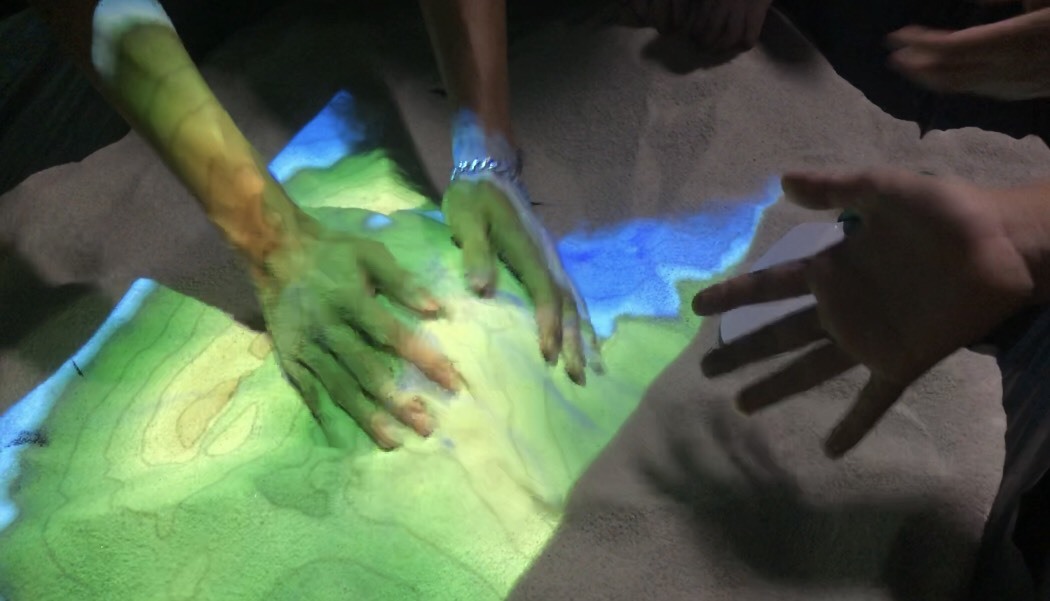
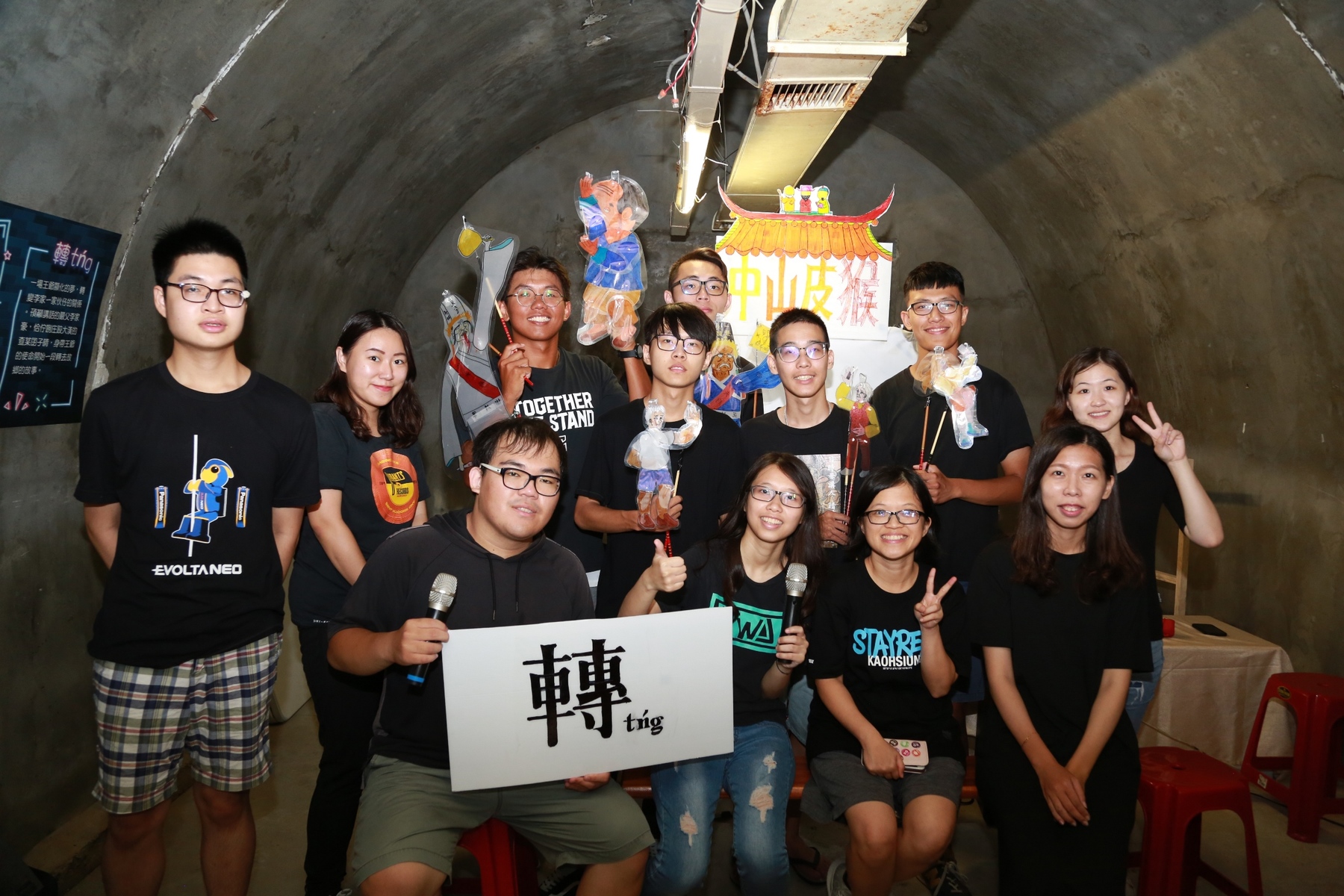
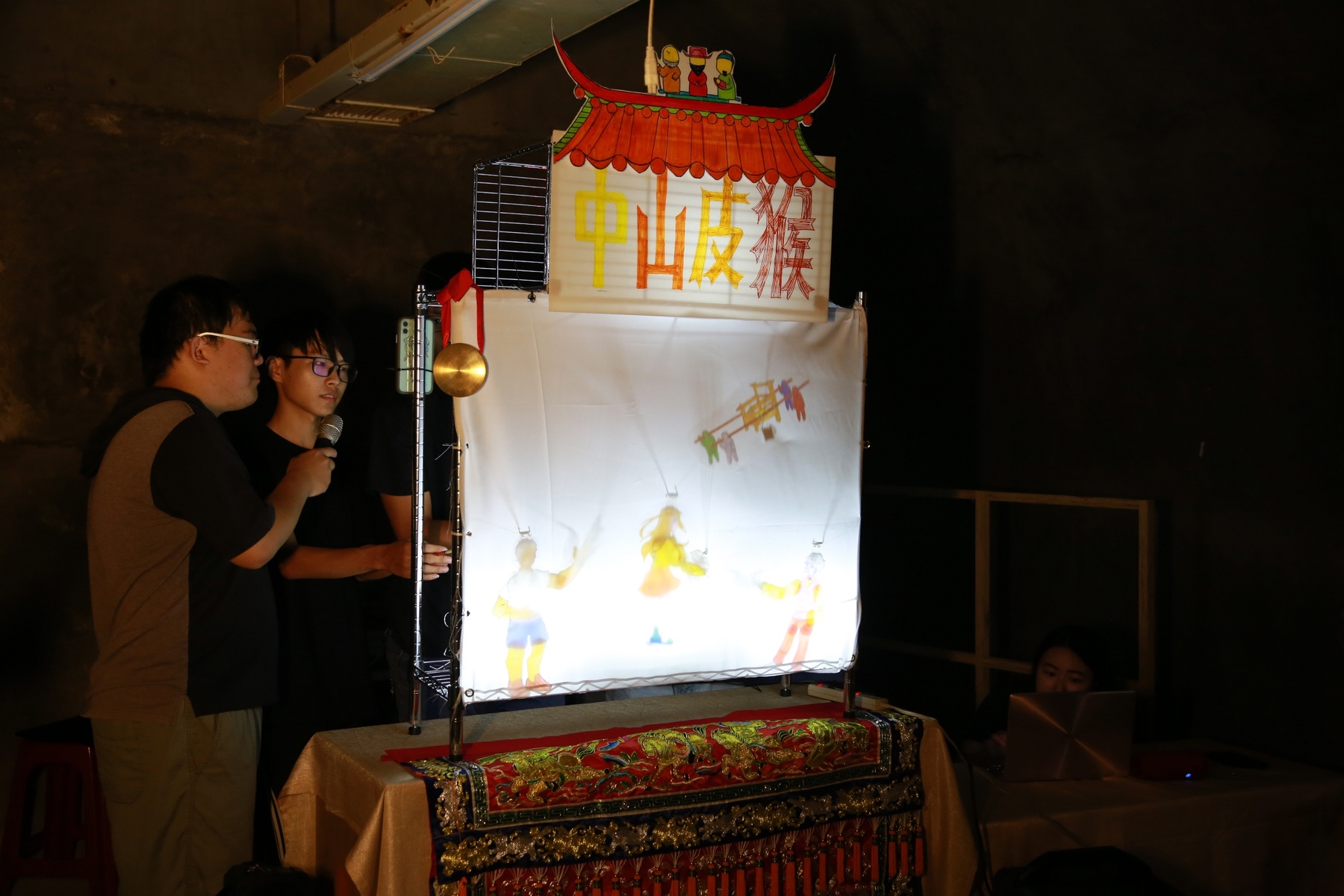
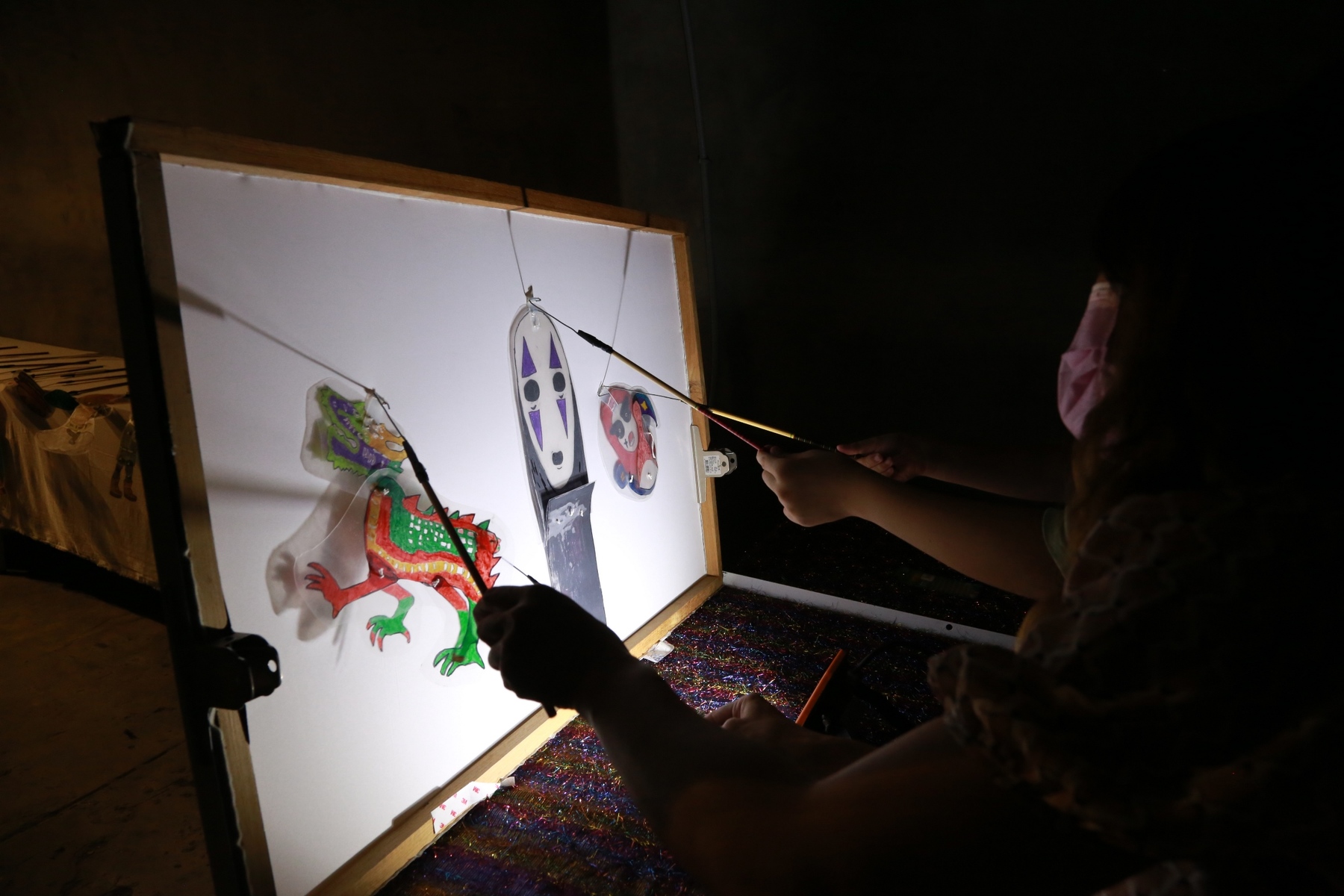
The students and teachers of National Sun Yat-sen University gathered in the Sizihwan Tunnel to give shadow play performances in Taiwanese. The team designed the space to make it resemble the squares in front of temples, where such performances often take place and invited the viewers to participate in games. Another team prepared an Augmented Reality (AR) Landform Sandbox hands-on experience. The color projected on the sand would differ according to the height of sand detected by the sensor. When the height of the sand - landform would drop below “the sea level”, the blue color would be projected on the sand. The visitors were thrilled!
In the Sizihwan Tunnel, there are a few air-raid shelters, usually closed. Their open doors attracted passers-by to come inside and watch four performances/exhibitions: “Play. Shadows” (戲。皮影), “The Science of Lights and Shadows” (光影科學), “Puppet Special Exhibition” (戲偶特展), and “Serigraphy Experience” (絹印體驗). The NSYSU students and teachers participated in a workshop on narration in the Taiwanese language and practiced narrating an original play in Taiwanese - “轉 tng2”, which narrates the story of a young girl, who breaks free from old customs and turns into a spirit medium, and also brings up the topic of youth’s changing identification with the local culture.
Associate Professor Chia-Lun Tu of the Department of Chinese Literature, NSYSU, said that the script of this performance was written in Taiwanese by students enthusiastic about the religion, beliefs, and culture of Taiwan. Before the performance, she invited Yu-Mei Chang, an experienced teacher of Shoushan Elementary School, who has been researching shadow play performances for over 20 years, to guide the students on how to use tracing paper, color pens, and cotton thread to create refined puppets, and on how to use the projection screen, LED lamps, and iron racks to design the stage and revitalize the withering traditional culture. The traditional shadow play art and the script itself require the play to be performed on a temple square, thus the team of NSYSU students and teachers created the decor of a temple square right inside the tunnel. The team actively interacted with the viewers and initiated games for the public to have fun while experiencing Taiwanese popular culture.
“The Science of Lights and Shadows” attracted crowds. Associate Professor Chin-Ping Yu of the Department of Photonics said that the AR Landform Sandbox is a technology shared by an overseas university. The Sandbox uses infrared sensors for interactive projection and has a fluid simulation function. Thus, when a pile of sand is molded by a player, the sensor will detect the alterations in height and the color projected on the sand will immediately change. The color projected on the “sea level” is blue, on the “lowlands” – green, on the “hills” – yellow and on the highest points on the “map” – orange and red, creating an image of a topographic map with contour lines.
Children enjoyed the sandbox experience, moving sand from one spot to another with both hands. Somebody “built” the Jade Mountain – the highest peak in Taiwan, somebody patted the sand to make it resemble the Chiayi–Tainan Plain in the middle, while other children built a tropical island in the middle of the blue “sea”, grabbing a pile of sand in their palms. Thanks to this projection technology, the children could visualize what they learned during geography classes and form the mountains, the sea, forests, deserts, and other landforms with their own hands, building their 3D topographic map. The event was part of the University’s USR-C Project “City as a Commuseum-Socially Embedded Community Engagement”, which aim is to pass on the culture of the port and promote cross-boundary innovation.
In the Sizihwan Tunnel, there are a few air-raid shelters, usually closed. Their open doors attracted passers-by to come inside and watch four performances/exhibitions: “Play. Shadows” (戲。皮影), “The Science of Lights and Shadows” (光影科學), “Puppet Special Exhibition” (戲偶特展), and “Serigraphy Experience” (絹印體驗). The NSYSU students and teachers participated in a workshop on narration in the Taiwanese language and practiced narrating an original play in Taiwanese - “轉 tng2”, which narrates the story of a young girl, who breaks free from old customs and turns into a spirit medium, and also brings up the topic of youth’s changing identification with the local culture.
Associate Professor Chia-Lun Tu of the Department of Chinese Literature, NSYSU, said that the script of this performance was written in Taiwanese by students enthusiastic about the religion, beliefs, and culture of Taiwan. Before the performance, she invited Yu-Mei Chang, an experienced teacher of Shoushan Elementary School, who has been researching shadow play performances for over 20 years, to guide the students on how to use tracing paper, color pens, and cotton thread to create refined puppets, and on how to use the projection screen, LED lamps, and iron racks to design the stage and revitalize the withering traditional culture. The traditional shadow play art and the script itself require the play to be performed on a temple square, thus the team of NSYSU students and teachers created the decor of a temple square right inside the tunnel. The team actively interacted with the viewers and initiated games for the public to have fun while experiencing Taiwanese popular culture.
“The Science of Lights and Shadows” attracted crowds. Associate Professor Chin-Ping Yu of the Department of Photonics said that the AR Landform Sandbox is a technology shared by an overseas university. The Sandbox uses infrared sensors for interactive projection and has a fluid simulation function. Thus, when a pile of sand is molded by a player, the sensor will detect the alterations in height and the color projected on the sand will immediately change. The color projected on the “sea level” is blue, on the “lowlands” – green, on the “hills” – yellow and on the highest points on the “map” – orange and red, creating an image of a topographic map with contour lines.
Children enjoyed the sandbox experience, moving sand from one spot to another with both hands. Somebody “built” the Jade Mountain – the highest peak in Taiwan, somebody patted the sand to make it resemble the Chiayi–Tainan Plain in the middle, while other children built a tropical island in the middle of the blue “sea”, grabbing a pile of sand in their palms. Thanks to this projection technology, the children could visualize what they learned during geography classes and form the mountains, the sea, forests, deserts, and other landforms with their own hands, building their 3D topographic map. The event was part of the University’s USR-C Project “City as a Commuseum-Socially Embedded Community Engagement”, which aim is to pass on the culture of the port and promote cross-boundary innovation.
Click Num:
Share
